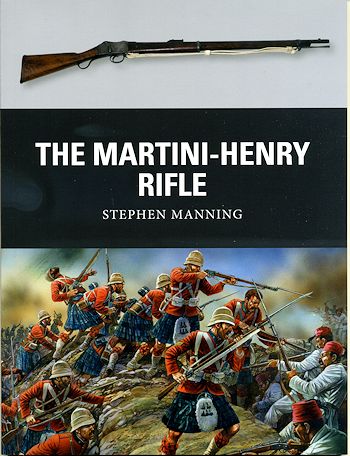 The 1800s
was a time of innovation. Often times the latest and greatest was only such for
a short time. This was quite typical of arms. In particular, rifles and the
shorter carbines. For decades, the best sort of rifle was a muzzle-loader or
what is frequently called a musket. These required a laborious amount of time to
reload and often put the somewhat static reloading soldier at peril. What was
needed was a gun that fired a cartridge type of bullet and one that was not
loaded through the muzzle. During the 1860s, these sorts of breech loading
rifles were developed and radically changed military warfare. Now the time
between shots was the time it took to remove the old cartridge and insert a new
one.
The 1800s
was a time of innovation. Often times the latest and greatest was only such for
a short time. This was quite typical of arms. In particular, rifles and the
shorter carbines. For decades, the best sort of rifle was a muzzle-loader or
what is frequently called a musket. These required a laborious amount of time to
reload and often put the somewhat static reloading soldier at peril. What was
needed was a gun that fired a cartridge type of bullet and one that was not
loaded through the muzzle. During the 1860s, these sorts of breech loading
rifles were developed and radically changed military warfare. Now the time
between shots was the time it took to remove the old cartridge and insert a new
one.
However, these early breech loaders had issues. One is
that the breech was not air tight and frequently the man with the gun would find
issues with powder burns as the flash of detonation leaked out of the breech. A
soldier with one of these guns would not want to hold it close to his face when
firing, so held it away, making a major dent in accuracy. It also diminished the
amount of pressure that went into sending the bullet out of the barrel.
Then there were issues with ejecting the old cartridge.
A jam here would turn a gun into a machined club.
The British Army held a competition in the early 1870s
to develop a rifle for their soldiers. The requirements were rather stiff for
the times, but there were a goodly number of entries. None of them met the
requirements, but two of them were close. These were Henry and Martini. Each had
major benefits over the competition and so it was decided to combine these
features into one rifle, hence the Martini-Henry.
As is the norm with weapons there was a time to properly
develop it and even once delivered, field use discovered areas for improvement,
so the rifle went through several upgrades. It was proven very useful in
campaigns in the Sudan, Afghanistan and the Zulu wars. However, the rifle did
have one major drawback in that it was a single shot and after only about a
decade of use, the repeating rifles made their appearance and the single shot
rifle was made obsolete.
However, the Martini-Henry had made its mark and was
still in use many years past its 'use by' date, in areas where fast firing
rifles were not important. Author Stephen Manning does a great job of providing
us with the history leading up to the rifle as well as its initial development
and it continuing upgrades. Of equal interest is the description of its use in
various campaigns in many parts of Great Britian's large empire of the late
1800. It all makes for a very good read and one that I have no trouble
recommending to you.
July 2013
For more on the complete line of Osprey books,
visit www.ospreypublishing.com
or contact them at Osprey Direct, PO Box 140, Wellingborough, Northants,
NN8 2FA, UK. In the US, it is
Osprey Direct at 44-02 23rd St, Suite 219, Long Island City, NY 11101., where you can
get a catalogue of available books.
If you would like your product reviewed fairly and quickly, please
contact
me or see other details in the Note to
Contributors.
 The 1800s
was a time of innovation. Often times the latest and greatest was only such for
a short time. This was quite typical of arms. In particular, rifles and the
shorter carbines. For decades, the best sort of rifle was a muzzle-loader or
what is frequently called a musket. These required a laborious amount of time to
reload and often put the somewhat static reloading soldier at peril. What was
needed was a gun that fired a cartridge type of bullet and one that was not
loaded through the muzzle. During the 1860s, these sorts of breech loading
rifles were developed and radically changed military warfare. Now the time
between shots was the time it took to remove the old cartridge and insert a new
one.
The 1800s
was a time of innovation. Often times the latest and greatest was only such for
a short time. This was quite typical of arms. In particular, rifles and the
shorter carbines. For decades, the best sort of rifle was a muzzle-loader or
what is frequently called a musket. These required a laborious amount of time to
reload and often put the somewhat static reloading soldier at peril. What was
needed was a gun that fired a cartridge type of bullet and one that was not
loaded through the muzzle. During the 1860s, these sorts of breech loading
rifles were developed and radically changed military warfare. Now the time
between shots was the time it took to remove the old cartridge and insert a new
one.